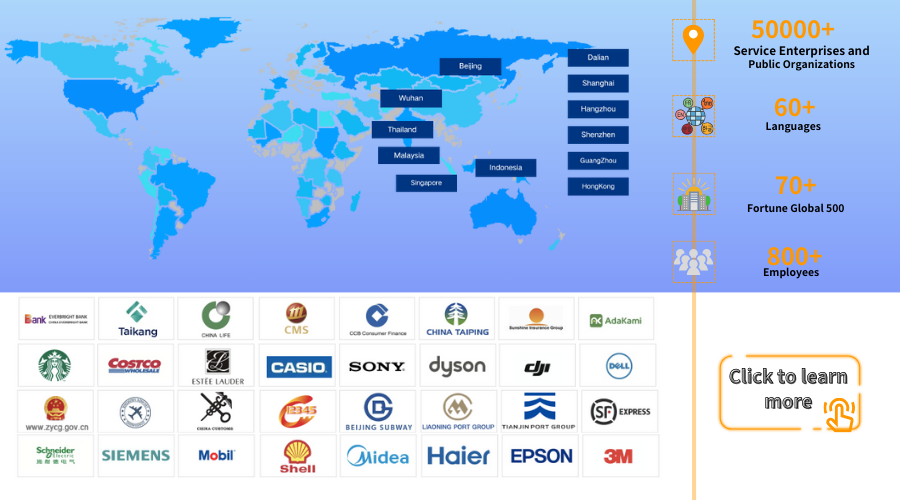How to Start a Call Center Business in 2024
Article Summary:The following 10 steps will guide you through the process of starting your own call center business from the ground up.
Table of contents for this article
- How to Start a Call Center Business in 10 Steps
- 1. Set Your Call Center Goals
- 2. Decide on Call Center Type
- Inbound vs. outbound vs. blended call center
- On-site vs. remote vs. virtual call center
- Call center vs. omnichannel contact center
- 3. Establish a Budget
- 4. Select Call Center Software Provider
- 5. Get Call Center Hardware and Equipment
- 6. Determine Your Staffing Needs
- 7. Hire a Call Center Team
- 8. Build Your Onboarding and Training Processes
- 9. Know How You Will Measure Call Center Performance
- 10. Build a Supportive Call Center Environment
- Set up Your AI-Powered Call Center with Udesk
- Take our Call Center for a spin—for free—to see how it can work for your business.
Starting a call center business can be a lucrative endeavor if done properly. Call centers provide an important service by handling inbound and outbound customer service calls for businesses. As more companies move customer interactions online and over the phone, the demand for quality call center services continues to grow. However, launching a new call center does require careful planning and execution. The following 10 steps will guide you through the process of starting your own call center business from the ground up:
How to Start a Call Center Business in 10 Steps
1. Set Your Call Center Goals
Just as with any other business, creating a call center requires thorough planning. Before beginning the setup of your call center, it's important to have a clear understanding of why you want to start one and to outline the specific, realistic, and achievable goals you hope to accomplish. These goals should align with your broader business objectives and be feasible within your current budget and resources. Additionally, setting goals will enable you to establish clear criteria for measuring the performance and overall success of your call center.
2. Decide on Call Center Type
Inbound vs. outbound vs. blended call center
Inbound call center
Inbound call centers primarily deal with incoming calls from existing customers, clients, or prospects. Businesses set up inbound call centers for general customer service, technical support, processing orders, payments, returns, and exchanges, handling upgrades and renewal requests, appointment scheduling, and inbound sales. The most typical industries to benefit from inbound call centers are e-commerce and retail, travel and hospitality, healthcare, finance, and insurance.
Outbound call center
In outbound call centers, agents are placing outbound phone calls to prospects or customers. Outbound call centers are commonly used for lead generation, telemarketing, sales campaigns, appointment setting and reminders, debt collection, market research and CSAT surveys, etc. For providing outbound call center services, you need call center software with auto dialing capabilities that will enable you to automate the dialing process, so that agents don’t have to dial each number manually.
Blended call center
Blended call centers (also known as hybrid call centers) combine both inbound and outbound calling capabilities and are best suited for businesses that have relatively equal volumes of incoming and outgoing calls. Luckily, many call center software providers offer a fair share of features to support both inbound and outbound calling activities. E.g., VoiceSpin call center solutions are perfectly suited for inbound customer support and outbound sales teams alike.
On-site vs. remote vs. virtual call center
On-site call center
In a traditional on-site call center, agents are going to work from a physical location, which might be the best option for fixed-location businesses and those with large teams. Improved team collaboration, direct supervision, and increased data security are some of the advantages that will follow. However, there are also certain downsides to selecting on-site deployment, such as higher operational costs, a rather limited talent pool, and a lack of flexibility of remote working.
Remote call center
Remote call centers are entirely offsite call centers, typically powered by outsourcing. This might be an ideal option for small businesses and startups that would like to avoid paying for physical office space, office equipment, and hardware, making remote call centers much more cost-efficient compared to on-premises solutions. That also provides you with access to a broader talent pool while allowing greater flexibility for agents.
Virtual call center
Similarly to remote call centers, virtual call centers aren’t tied to one geographical location, with agents often being distributed across multiple regions, working from various remote locations. Virtual call centers run on cloud-based VoIP call center software, allowing agents to access the system and work from nearly everywhere, as long as there’s a stable internet connection. That offers businesses access to an even broader talent pool, easy scalability, and cost-efficiency.
Call center vs. omnichannel contact center
Call center
If you’re looking to set up a traditional call center where agents will only handle voice communications, you would basically need to purchase a business phone system with call-handling features like IVR, call routing, call forwarding, call transfer, call queueing, call recording, call reporting and analytics, click-to-call, auto dialing, etc.
Omnichannel contact center
If you’re planning to handle customer interactions across multiple communication channels, you may want to set up an omnichannel contact center that integrates both voice and digital communication channels like email, live chat, SMS, social media, and Instant Messaging apps. With an integrated solution, agents will be able to manage all interactions from one platform, with no need to switch between the apps, eliminating the risk of communication silos.
3. Establish a Budget
The total cost of setting up a call center will ultimately depend on a range of factors, such as the setup type, software and hardware, required features, the number of employees, etc. Here’s what you should consider when putting together your budget:
- Office space and hardware
- Call center software
- Employee salaries
- Training and customer support
4. Select Call Center Software Provider
Once you’re clear on what type of call center you are going to run, it’s finally time to choose a call center software provider that will align with your business goals, IT resources, budget, and scalability needs.
Next, depending on whether you need to manage inbound calls or make outbound calls, you will need to evaluate potential providers based on the range of inbound/ outbound call center features they are offering.
5. Get Call Center Hardware and Equipment
If you choose an on-premises call center, you'll need to invest in hardware and equipment, including PBX system, servers, telephony hardware, networking equipment, power supply systems, computers, headsets, VoIP phones, desks, chairs, and other office equipment. This requires a significant upfront investment.
For a cloud-based call center, you only need a high-speed internet connection, computers, headsets, VoIP phones, or softphones, and office equipment. The rest is managed by the provider.
6. Determine Your Staffing Needs
For a successful call center, the right number of employees is crucial. Understaffing leads to long wait times, abandoned calls, and low satisfaction. Overstaffing adds to costs. Consider call volume, wait times, call handle times, missed/abandoned calls, and define positions clearly.
7. Hire a Call Center Team
Call center jobs require more than just industry experience and familiarity with software systems. Hiring managers should also look for candidates with excellent communication skills, empathy, conflict-resolution abilities, multitasking skills, and stress management.
8. Build Your Onboarding and Training Processes
In call centers, employee onboarding is crucial for long-term benefits like improved engagement, increased efficiency, and reduced turnover. But ongoing learning through regular training and coaching is also essential for building an efficient call center team. This includes internal knowledge base, agent training webinars, customer interaction library, scripts for different calls, call-handling procedures, and on-the-job training.
9. Know How You Will Measure Call Center Performance
Based on your call center type, goals, and software capabilities, you may track different metrics and KPIs to measure call center efficiency and agent performance. Common metrics to monitor include Average Handle Time (AHT), Average Speed of Answer (ASA), First Call Resolution (FCR), Call Abandonment Rate, Customer Satisfaction (CSAT) Score, and Conversion Rate.
10. Build a Supportive Call Center Environment
Call centers often face high employee turnover due to job stress. This disrupts operations and impacts team morale. To combat this, create a positive workplace by offering flexible scheduling, encouraging feedback, organizing team events, and implementing an employee recognition program.
Set up Your AI-Powered Call Center with Udesk
That all being said, why should you start your journey with Udesk? Whether you’re just looking to set up your call center from scratch or researching alternative options to upgrade your contact center, Udesk’s AI-powered contact center solutions might be the right fit for you.
With Udesk's call center, inbound and outbound calling are both supported. Access Cloud Telephony, Unified Communications, and Call Center Solutions tailored to your needs, Udesk provide excellent support for customers who prefer phone-based assistance.
In addition, our call center offers powerful AI and customizable capabilities to improve customer experiences and profitability. This includes call center IVR for interactive voice response and self-service, as well as automatic call distribution (ACD) with skills-based and intelligent routing to ensure each customer receives the right support. We also elevate omnichannel experiences with the power of artificial intelligence (AI), engaging customers in the moment through bot support, data-driven insights, and more. Furthermore, we empower your teams with user-friendly analytics and reporting tools, unlocking valuable insights for seamless cross-channel customer experiences.
Take our Call Center for a spin—for free—to see how it can work for your business.
The article is original by Udesk, and when reprinted, the source must be indicated:https://www.udeskglobal.com/blog/how-to-start-a-call-center-business-in-2024.html
Call Center、Cloud Call Center、Contact Center、

 Customer Service& Support Blog
Customer Service& Support Blog



